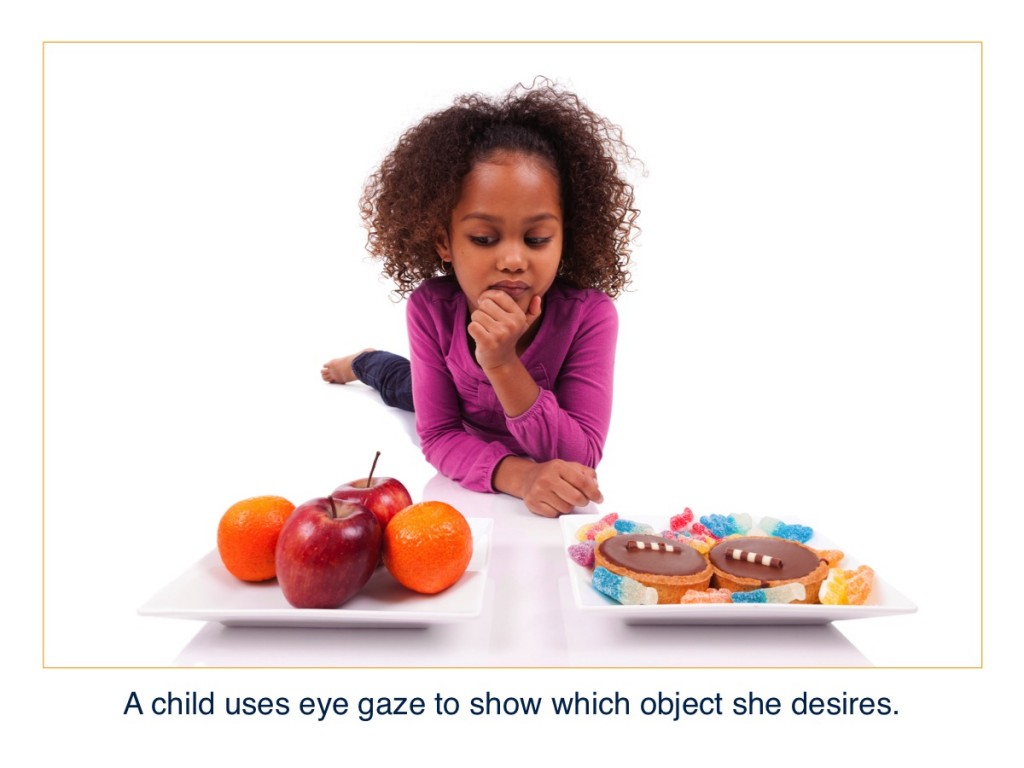
Our understanding of eye gaze continues to develop. Over time, we use information about where someone is looking to try to figure out what he or she is thinking.
There is some evidence of an association between children’s early gaze following and their later ability to understand what another person is thinking. This later ability is called “theory of mind.” Research has shown that infants who were better at gaze following at 10.5 months of age used more words to describe their feelings and thoughts (e.g., “mad” or “think”) when they were 2.5 years old. Those 2.5-year-olds who used more words to describe their mental states were better at figuring out what other people were thinking when they were re-tested at 4.5 years of age.
By preschool age, children can use eye gaze to determine what someone desires. In one study, children looked at pictures of a little boy and different objects. In each photo the boy’s eye gaze was directed at one of the objects. Four-year-old children were able to name the object the boy wanted based on the direction of his eye gaze. Three-year-old children were not able to do this task.
Even at age 4, children’s understanding of gaze is still developing. Four-year-old children were just as likely to think a person desired an object she looked at briefly, compared to an object she looked at for an extended time. By age 6, children understood that people spend more time looking at something they want. As adults, we continue to use eye gaze to understand what other people are thinking and feeling.
-
- Autism Spectrum Disorder (ASD)
- a developmental disorder that impairs a child’s social and communication skills
- Directing attention
- using eye gaze or a gesture to direct another person’s attention to an object or event
- Following attention
- following another person’s eye gaze or gesture
- Gaze following
- looking at what another person is looking at
- Joint attention
- shared attention between social partners to an object or event